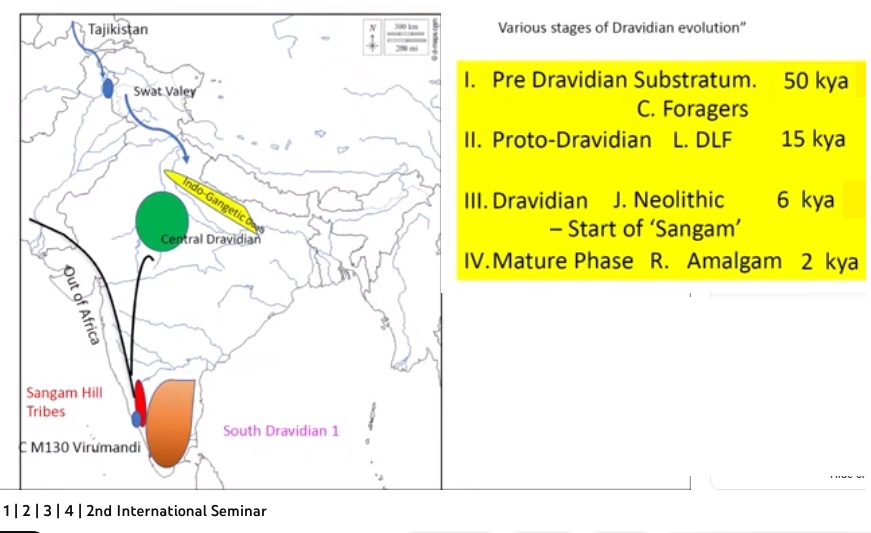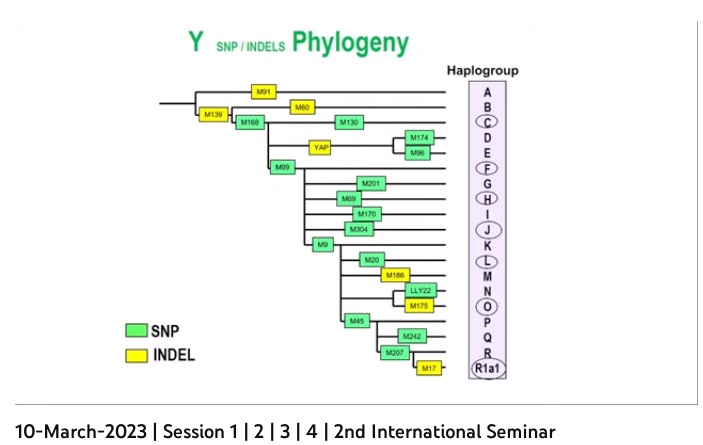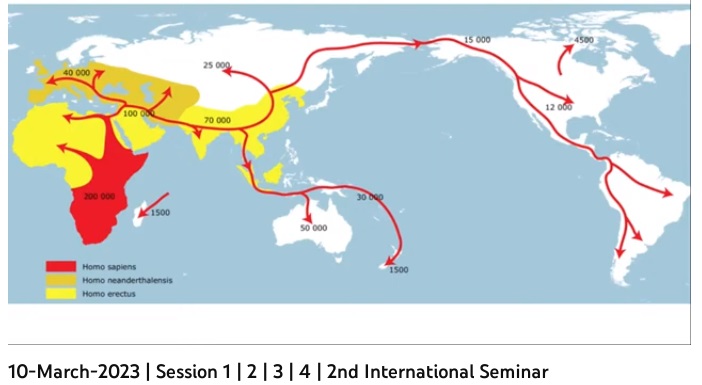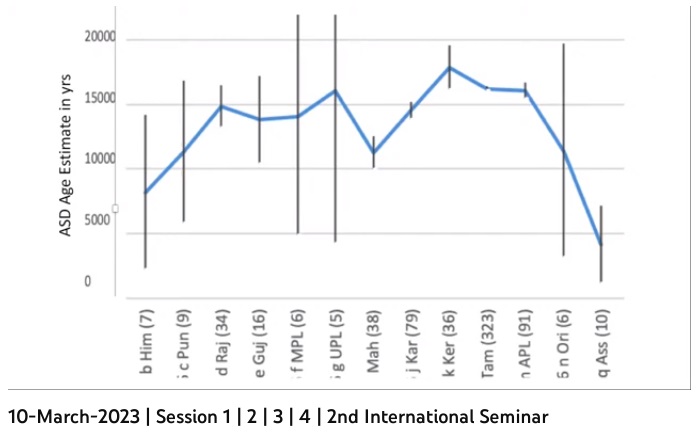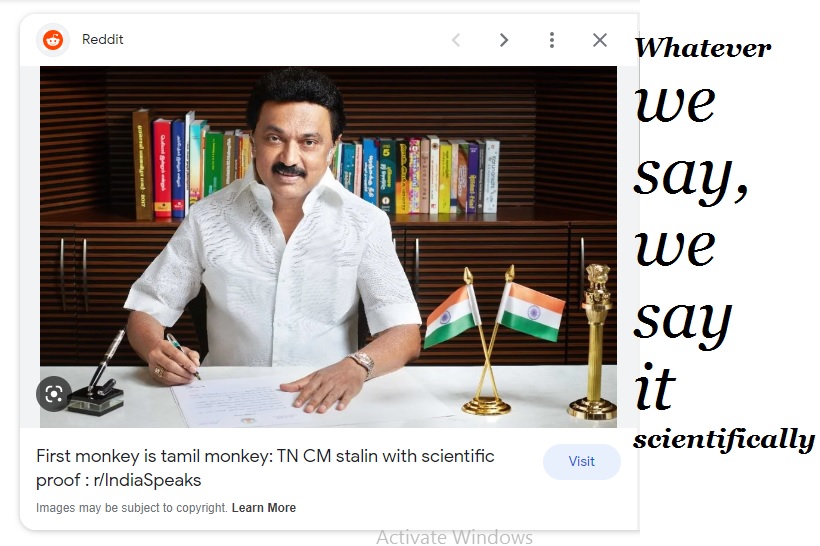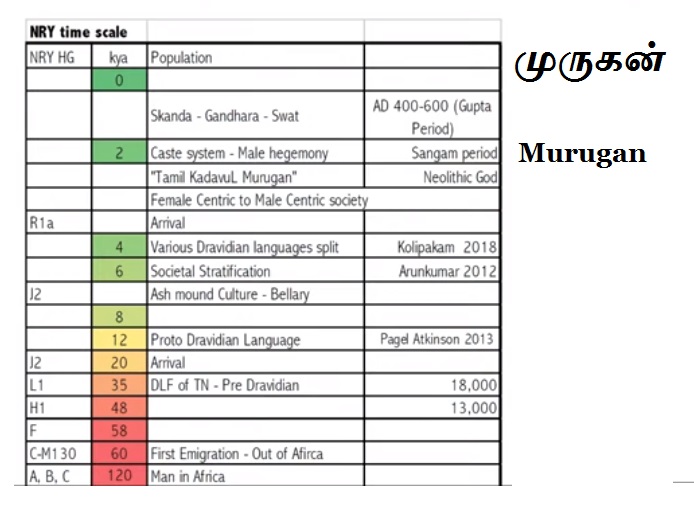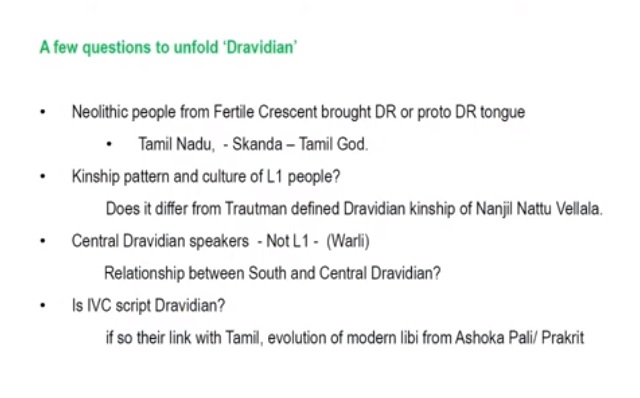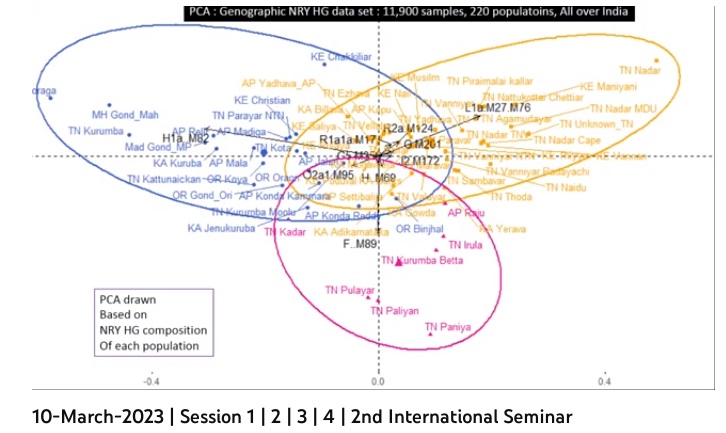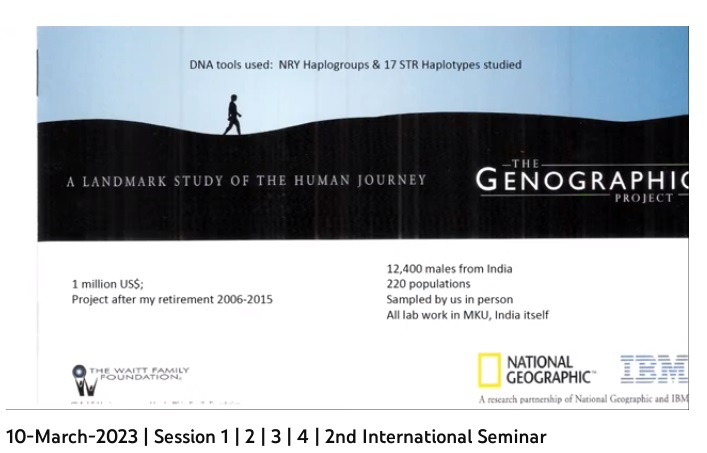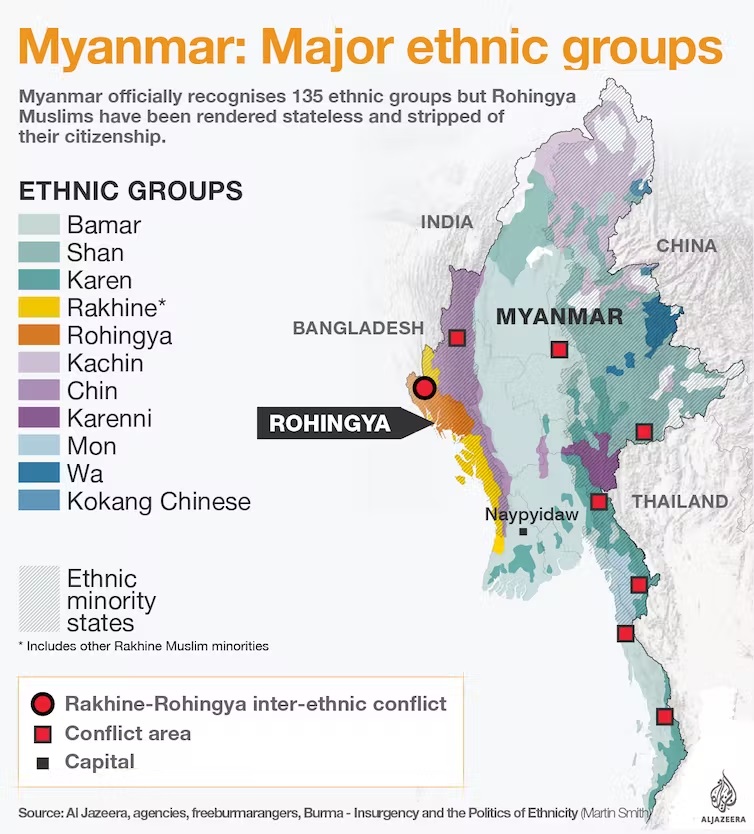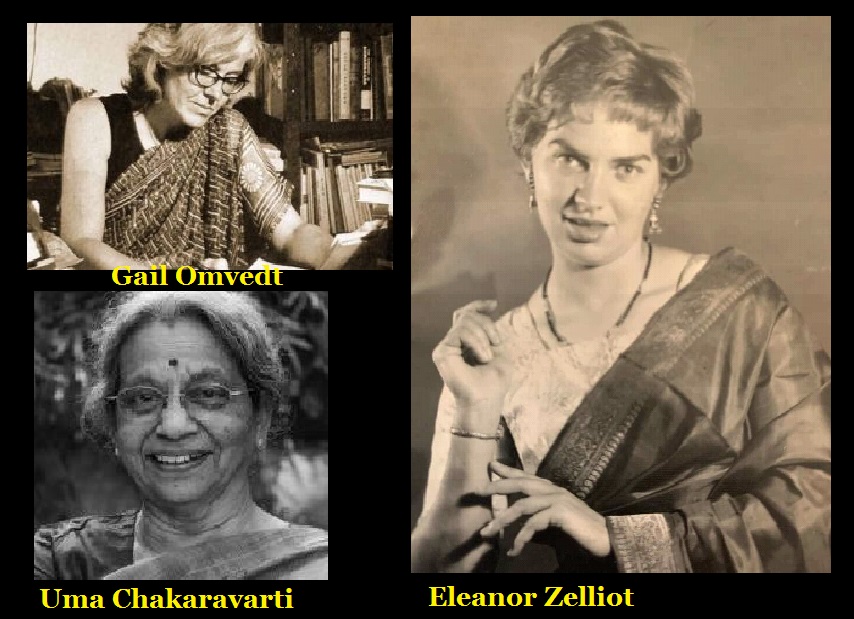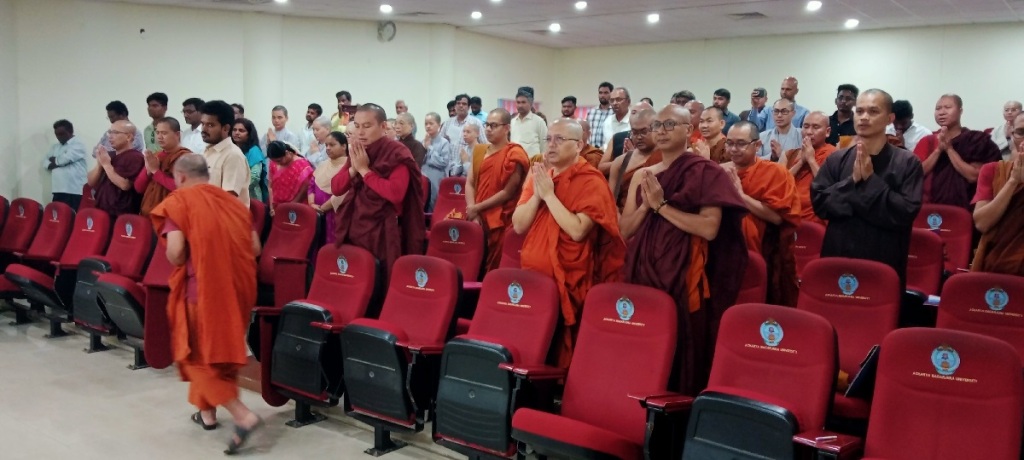Recent Advances in South Indian Archaeology – The 2nd International Symposium in memory of Iravatham Mahadevan – Commercialization of Archaeology, related issues (10)

From the bible to crude oil: As for as the “west” is concerned, archaeology was born, encouraged and developed with the creation of myths related to their religious beliefs. There has been a separate subject, “Biblical archaeology,” and it is not known, is there any counterpart of such “archaeology” in other competing and competitive religions and faiths. Deluge, flood, Ark, cross, and so other subjects have been discussed archaeologically and volumes of reports and books produced. Whether Eve was created from Adam or both created individually, they married together as brother and sister or born separately so that they could marry and beget children, yet the children split and speak different languages. From the Paleolithic to the modern men are found in many places. Now, the demand is for crude oil, as from which only, common men get LPG, petrol, diesel etc., and not from the archaeological diggings, DNAs, or chromosomes or by calling man white or black, Aryan or Dravidian…….etc., Two world Wars were fought and millions were massacred in the name of race, racism and racialism. Even today war is going on in the name of peace, petrol and production of weapons.

From “white and black” to “Aryan and Dravidian” the problem continues: If the past 300 years period is divided as 1700-1800, 1800-1900 and 1900-2000, or 1750-1800, 1800-1850, 1850-1900, 1900-1950 and 1950-2000, the origin of human has not been settled with in spite of the scientific approach was / is applied, methodology adopted and studied samples even in the laboratories of high orders. From morphological to internal, blood to blood cells, cells to neurons, DNA to chromosomes, the principles of race, racism and racialism consciously work in the minds of the faithful researchers, dedicated experts and obedient technicians in laboratories. In English, more verbose with scientific terms and terminology are / have been created, but the same old issues continue. Whether monogenetic or heterogenetic, out of Africa or out of Europe, the problem of Black or White remain the same. So for 50, 100, 200, or 300 again and again to prove the same hypothesis or theory, why more and more diggings, new laboratories and others are required? Common people have not got any benefit out such research and they are not worried also.
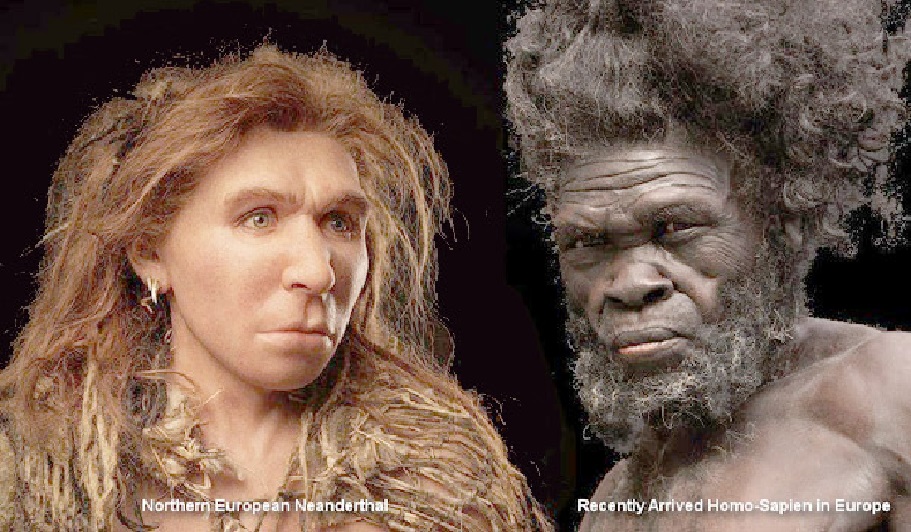
Why cut funds for Archaeological studies?: Globally, American and European Universities do not want to encourage archaeology, as the more and more such excavations are carried on in other continents, the more the extermination of the past civilizations, genocide and other crimes and acts of violence are coming out. They are not useful to the past-colonial masters and rulers. Under the economic exploitation of natural resources, the MNCs ae interested in pursuing more sites for getting natural resources like crude oil, gas and minerals. Therefore, when UK announced 50% cut for archaeology, some came out apologetically as follows. Under the caption[1], “Six Reasons to Save Archaeology From Funding Cuts,” what is discussed is – “Here are six reasons why archaeology has never been more relevant to society”:
- Archaeology is (not( only about the past
- Archaeology is a science
- Archeology is a universal discipline
- Archaeology can help shape a better world.
- Archaeology is important to the economy
- Archaeology is an excellent foundation for any career
Incidentally, in UK, archaeology hs become business – Companies working in development-led archaeology on average returned a profit (or surplus, for charitable organisations) of 2%. This low level of profit being reported across the sector is potentially unsustainable. 41% of respondents reported profits of less than 5% of the value of their turnovers, including several that reported annual losses of up to £482,373. The average profit/surplus per FTE member of staff was £3,663, the median was £2,550.

Large-scale development-led archaeology has changed the very nature of archaeological datasets. In addition to the familiar positive evidence of structures and deposits, there is now a wealth of ‘true-negative’ evidence: the confirmed absence of archaeological remains. Making good use of such data presents a challenge and demands new ways of thinking. Using case studies based on recent developer-led work in the UK, the authors suggest that focusing on ‘fingerprints’ of past human activity at a landscape scale provides a useful approach. The results argue in favour of changes to existing recording systems, as well as the need to integrate more fully both positive and negative evidence in archaeological interpretation[2].

Chartered Institute for Archaeologists: When archaeology has been commercialized, definitely the involved would talk only in the name of capital and investment, profit and loss and so on. Thus, in UK they have business working at different levels[3]. Research Ltd This project was commissioned by the Chartered Institute for Archaeologists and the Federation of Archaeological Managers and Employers and funded by the Chartered Institute for Archaeologists, the Federation of Archaeological Managers and Employers and Historic England.State of the Archaeological Market 2018 – This report has been prepared by Landward Research Ltd in its professional capacity as research, training and project management specialists, with reasonable skill, care and diligence within the agreed scope and terms of contract and taking account of the manpower and resources devoted to it by agreement with its clients, and is provided by Landward Research Ltd solely for its clients, the Chartered Institute for Archaeologists and the Federation of Archaeological Managers and Employers. It may be further distributed as the clients see fit if Landward is fully credited as the originator of this report and Kenneth Aitchison is fully credited as the author.

Archaeology as disaster capitalism: The “corporate / business / commercial archaeology” wants only making money and not interested in preserving the past. Archaeologists commonly sign non-disclosure agreements for the corporations and developers for whom they work, limiting their ability to communicate about the work being done. Thus, there is little opportunity for truthtelling. Our conclusions destabilized four conventional tropes that we learned in our formal state education in archaeology[4]:
- archaeology is not about the preservation of sites and materials, but rather is about facilitating the destruction of heritage landscapes;
- archaeology is not undertaken in the name of research to learn about the past, but is undertaken to fulfill legal and regulatory obligations in the present;
- archaeologists do not have a responsibility to disseminate their results, except to their clients and the government; and
- archaeology is not undertaken for the public good, but is instead a private, for profit enterprise.
Archaeology is a form of disaster capitalism, characterized by specialist managers whose function is the clearance of Indigenous heritage from the landscape, making way for economic development. When presented with this critique, archaeologists respond strongly and emotionally, defending archaeology. Anger emanates from and revolves around the assertion that archaeologists are not just complicit in but integral to the destruction of the very heritage they claim to protect. In what we believe is an act of philosophical and economic self-preservation, mainstream archaeologists actively forget the relationship between archaeology, violence, and the global heritage crisis. Securely defended by its practitioners, archaeology, therefore, remains an imperial force grounded in the ideology of growth, development, and progress.

Commercialization in Archaeology: Problems, Old and New: C. Ann Bauermeister[5], summarized as, “Archeology has long enjoyed popularity among the public. Such interest is an asset to the discipline, for it can generate the support integral to the profession and to the study of the archeological record. Unfortunately, the allure of archeology also has the potential to be . destructive to the archeological record. When archeology is viewed as a hobby is when problems can–and do–arise. The term “amateur archeologist” has been applied to nonprofessional or untrained persons who pursue archeological work. Why our profession is thought of as one where amateurs are welcome is not entirely clear, though perhaps it is due in part due to how archeology has been romanticized through entertainment mediums. This paper addresses the current situation regarding collectors or “amateur archeologists”. More specifically it focuses on the commercialization of antiquities, the problem with fake and replicate artifacts, and finally the role that the Internet now plays”. According to Murphy et al.[6], “commodification is the process through which objects of archeological value are transformed through market activities into commodities with monetary value and transferred from public ownership to private” (1995:39). The problems addressed is attest to the fact that this is indeed a dilemma. The role of collectors, the influx of fraudulent artifacts, and the Internet as a trading network are current issues that archaeologists will have to confront. Given the situation, they need to take a proactive stance against the commercialization of artifacts.

Outsourcing, ethics and handling of samples: Nowadys, privatization works in archaeology, archaeological excavation, collection, testing of samples, disposal of samples, commercialization of samples etc. thus, outsourcing has also come into play with engagement of workers (who do not know any archaeology), students (under the guise of giving training) and others (trained but contract labourers). L. M. Shaffer Raab and others pointed out that[7], “The client-oriented approach to contract archaeology is a technical service rather than genuine scientific research. Such an approach fails to meet the requirements of the law, fails to satkfy the needs of archaeological science, and frequently fails to Protect the client i interests. A client orientation encourages an excessive emphasis on profits from contract work. Profits not only exclude a balance of archaeological, client, and public interests but threaten the scientific future of contract work. Solutions to the problem of client-oriented work include better academic training as researchers, support for government archaeologists, a strong professional consensus on ethical and performance standards, and attention to public interests. [contract archaeology, client-oriented archaeology, research profits, research obligations, professionalism]”

“Hypotheses” presented as Conclusion: Three days sitting there and listening to many archaeologists, epigraphists, numismatists and related experts, make any serious researcher and ordinary person would definitely think, what is the use of the conference and the results, if any, proposed or made to understand by others.
- Iravatham Mahadevan honestly accepted, “neti, neti”= neither this or that, thus, no conclusive conclusion can be arrived at the decipherment of Indus symbols, pictograms and script like features.
- But, many have been discussing as if the script has been deciphered, it is finalized and so on.
- Most of the paper presenters have not come with their results, but, went on asserting that their findings have not be conclusive, as they have been preliminary;
- samples have not been sent to laboratories for dating; and other fats are not revealed;
- still “hypothesis” is boldly mentioned in the last slide as “conclusion,” why then such one hour long discourse is required is not known. Therefore, it is evident that sill such “hypothesis” is forced o the viewers.
- The theme “Recent advances in archaeological investigations of South India,” has been ignored, neglected or forgotten more that 70% paper presenters.
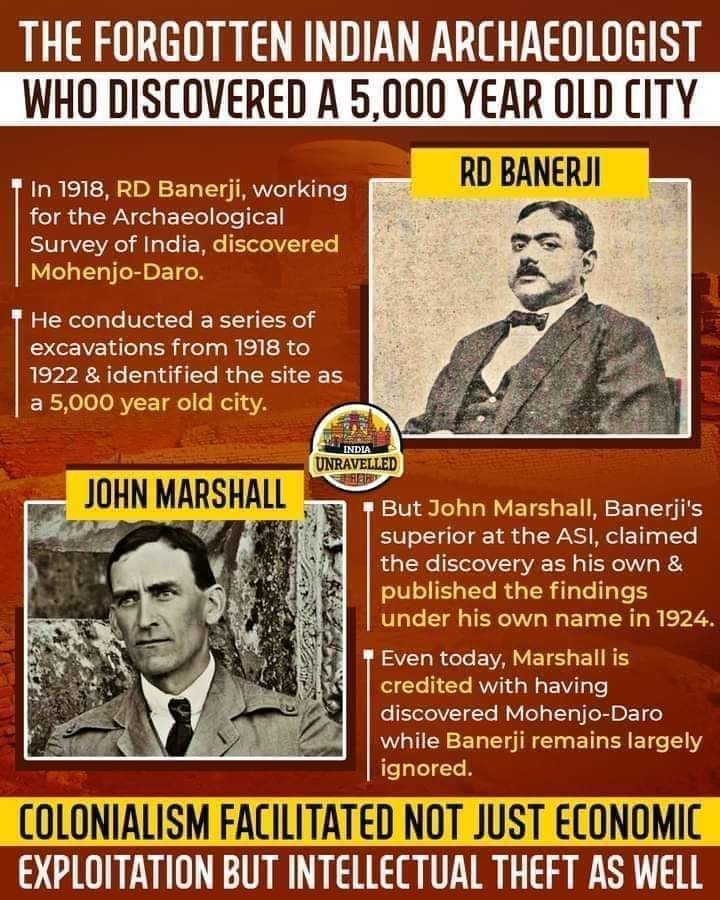
Questions, discussions avoided, evaded and conference proceeded: When different scholars, experts and others are coming together, Thus, slowly, asking questions were discouraged and stopped also on the pretext of time. Every year, hundreds of seminars, conferences and workshops are conducted throughout India spending crores of rupees. But, again and again, the expects come out the same or similar results and conclusions that divide people based on language, literature, race, ethnicity and so on. For bringing people together and progress in other aspects, nothing is suggested, brought out or concluded with specific points. Here also with all the expertise, scholarship and research, directly or indirectly, most of the papers come to revolve around the question of “Dravidian, Dravidians, Aryan, Aryans, invasion, migration, vegetarian food, non-vegetarian food, Vattezguthu (round script[8]), Tamil ezhuttu (Tamil script), ” etc. More than 100 years such research was conducted, now also is being conducted, but, what is the use to the general public, the people of Tamilnadu and India.
© K. V. Ramakrishna Rao
18-03-2023.
[1] The U.K. government recently- 2021, announced plans to cut its subsidy for English university teaching of the subject (along with many arts courses) by 50 percent because it is not part of the government’s “strategic priorities.” https://www.sapiens.org/archaeology/reasons-to-save-archaeology/
[2] Thomas, R., & Darvill, T. (2022). What haven’t we found? Recognising the value of negative evidence in archaeology. Antiquity, 96(388), 955-967. doi:10.15184/aqy.2022.69
[3] https://www.archaeologists.net/sites/default/files/Archaeological Market Survey 2017-18.pdf
[4] Hutchings, R., & La Salle, M. (2015). Archaeology as disaster capitalism. International journal of historical archaeology, 19, 699-720.
[5] Bauermeister, Ann C. “Commercialization in Archaeology: Problems, Old and New.” (1999). University of Nebraska – Lincoln, DigitalCommons@University of Nebraska – Lincoln.
[6] Murphy, L.E., M.e. Beaudry, R.E. Adams, and J.A Brown Commercialization: Beyond the Law of Above It? Ethics and the Selling of the Archaeological Record. Ethics ill American Archaeology. 1995
[7] Raab, L. M., Schiffer, M. B., Klinger, T. C., & Goodyear, A. C. (1980). Clients, contracts, and profits: Conflicts, in public archaeology. American Anthropologist, 82(3), 539-551.
[8] https://www.tamilvu.org/ta/tdb-titles-cont-inscription-html-vatteluttu-280369
Filed under: Dramila, Dravida, Dravidam, dravidar, Dravidi, Dravidian, dravidian model, dravidian monkey, dravidian stock, Dravidian University, historian, historian politician, historical politician, historiography, historiosophy, history, history usage, history useful, history useless, Iravatham, Iravatham Mahadevan, K. V. Ramakrishna Rao, script, secession, sectarian, sectarian faith, sectarianism, tamil, Tamil Brahmi, tamil chauvinism, Tamil inscription, Tamil manuscript, Tamil manuscripts, tamil monkey, tamil sectarianism, tamil separatism, tamili, tamilnadu, Vedic, violence, white, White city, woman, women | Tagged: archaeological survey of India, archaeologist, archaeology, archaeology department, archeological, ariyan, Ariyar, arya, aryan, aryan invasion, aryan problem, aryan race, bodleian library, Deccan Archaeological and Cultural Research Institute, Dramila, dravid, Dravida, Dravidam, dravidan, Dravidar, Dravidi, Dravidian, dravidian model, dravidian race, dravidian stock, Dravidians, marine archaeology, rescue archaeology | 8 Comments »




































































